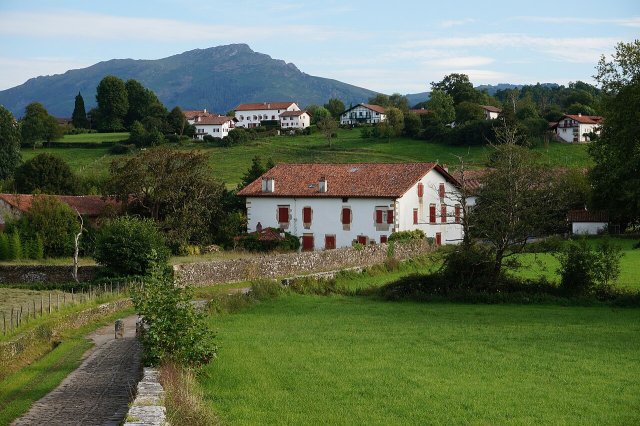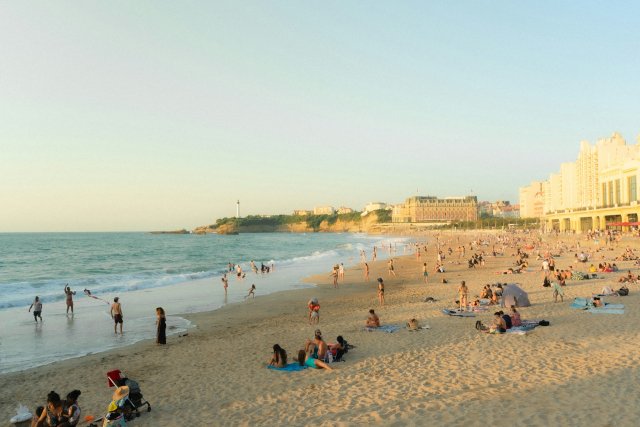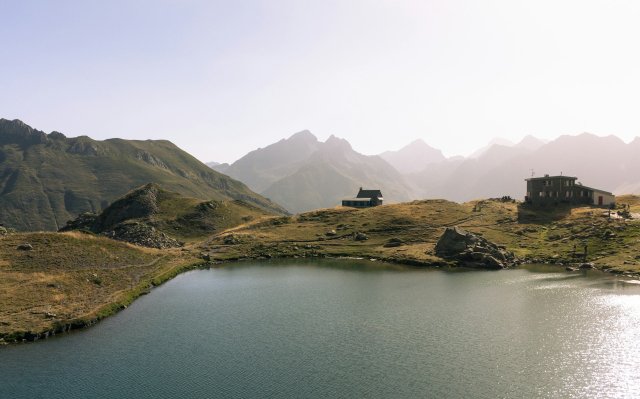The Basque Country is a region with so much to offer, with its gorgeous coastline, the Pyrenees mountains, and deep-rooted cultural traditions. Whether you’re looking to enjoy some relaxation on the beach, hike in the mountains, or explore typical Basque villages, there’s something for everyone.
For us, the best time to visit the Basque Country is during the shoulder seasons–April, May, June, September and October–when there are fewer tourists, and the weather is normally pleasant.
Here, we’ve put together a month-by-month guide to help you plan the perfect trip, including the best places to visit, the typical weather, and festivals.
We warmly invite you to browse our self-drive tours in the Basque Country

©
Basque Country by Month
January and February (Winter)
This is one of our least favorite times to visit the Basque Country, due to the weather. Although it is generally milder along the coast than in other parts of France, with temperatures around 10-15°C/50-59°F, they can drop to below zero. And of course, the weather is much colder and snowier in the Pyrenees.
We don’t organize ski trips, but there are a number of very good ski resorts across the French Pyrenees, including La Pierre Saint-Martin and Artouste in the French Basque Country.
Winter may be a good time to enjoy the Basque region’s world-renowned gastronomy. Enjoy trying some regional delicacies in Les Halles de Bayonne (the indoor food market hall in Bayonne) or enjoy the many pintxo bars (selling tapas-like dishes) in the old town of San Sebastian, across the border in Spain. Foodies won’t be disappointed, and the tourist crowds will be smaller than at other times of year.
You can explore the south west coast of France in one week on our tour of Bordeaux, the Basque Country and Carcassonne

©
March and April (Spring)
As spring arrives, the Basque countryside begins to bloom, and temperatures start to rise. That being said, there can still be many rainy days, so be sure to bring waterproof clothing and footwear.
April can be a pleasant time for hiking in the Ossau Valley, if the weather is dry.
Coastal towns like Hendaye and Ciboure are quieter in early spring, so while the weather probably won’t be ideal for a day at the beach yet, you can enjoy a relaxing walk through these charming Basque towns without the summer crowds.
Spring also kicks off the festival season, and in April, the Bayonne Ham Fair is a highlight. You can enjoy tastings of local produce and see many locals wearing traditional Basque clothes and demonstrating their culinary heritage. You can learn more about the Basque culture at the Musée Basque.
If you’re interested in exploring the Basque Country, as well as Dordogne and Bordeaux, check out our southwest France itinerary

©
May and June (Late Spring/Early Summer)
May and June are some of the best months to visit the Basque Country. The weather is warm but generally not too hot, making it ideal for being outside. You can walk along the Sentier du Littoral in Bidart, or take a scenic drive through the Basque countryside, visiting beautiful villages like Espelette and Ainhoa.
In Itxassou, cherry season is in full swing in early June, and the village celebrates this with its famous cherry festival. Eat them fresh or buy some delicious jam to take home as a souvenir. The cherries pair beautifully with other local specialties, such as Ossau-Iraty cheese and Bayonne ham.
There will be more tourists in the region than early in the year, and our priority is to help our travelers escape the tourist crowds and experience France like a local. This is why we plan itineraries that guide our travelers to quieter spots that many tourists don’t know about. These include beauty spots like the villages of La Bastide-Clairence or Sare, where you can enjoy beautiful scenery and immerse yourself in the Basque culture away from the crowds.
We invite you to take a look at our southern France road trip, which will take you across southern France from the Basque Country to Carcassonne and Provence.

©
July and August (Summer)
If you’re thinking of visiting the Basque Country in July and August because of the weather, we would recommend reconsidering. Although there are likely to be some hot and sunny days, sunny weather is never guaranteed in the Basque Country. It’s possible that it may even rain every day, due to the proximity of the Pyrenees mountains to the Atlantic Ocean. Then, on the hottest days the temperature can rise above 90°F/30°C, so it may just be too hot for some people’s tastes. This is particularly true if you want to enjoy comfortably strolling around some of the region’s lovely towns and villages, or hiking in the countryside.
The main reason to avoid the Basque Country in the peak summer months is because the region will be extremely busy, particularly along the coast in towns like Biarritz and San Sebastián (just across the border in Spain). There are not many roads along the coast, which means you may encounter heavy traffic when exploring by car, and have difficulty finding parking.
Our recommendation is to avoid visiting the Basque Country during the peak summer period.

©
September and October (Early Fall)
Early fall is another of our favorite times to visit the Basque Country. The weather is still warm, but the majority of the summer crowds have left, and the coastal areas in particular are noticeably quieter.
It’s the perfect season for hiking through the Ossau Valley as the fall drapes the landscapes in yellows, oranges and reds. It’s also a lovely time for strolling through some typical Basque villages, such as Ainhoa, Sare, or Saint-Jean-Pied-de-Port.
On the third weekend of September, Les Journées du Patrimoine (Heritage Days) are held across France and allow visitors free entry to historic sites, museums and gardens. These include some that are closed to the public for the rest of the year. Check this map to see which places you can visit.
If you would like to experience a local Basque festival, the Espelette Pepper Festival takes place in late October. It’s a celebration of the famous Espelette pepper, with markets, tastings, and traditional Basque music and dance.
You can explore southern France from Bordeaux to Avignon (including a stay in the Basque Country) with us. We can adapt the tour just for you!

©
November and December (Winter)
Unless you want to experience the Basque Christmas traditions, we don’t recommend visiting the region in the winter, as the weather is likely to be cold and wet.
While you may not find large Christmas markets in the smaller villages, there are usually festive decorations and lights, with local shops selling artisanal gifts and seasonal delicacies.
Pintxos (like tapas) may be served with a festive twist around Christmas. In local bakeries, you may look out for Gateau Basque, a traditional Basque cake filled with either cream or black cherry jam (a Basque specialty).
If you’re in Saint-Jean-de-Luz around Christmas, you may see the Christmas parade and witness the Olentzero processions, a unique Basque tradition. And if you plan to visit Bayonne, be sure to pick up some Basque chocolate–a delicious souvenir or gift for friends and family back home.
Gourmets may be interested in our gourmet food tours in France

©
In summary, the best time to visit the Basque Country depends on what you’re looking for:
Spring (May and June) offers pleasant weather and fewer crowds than the peak summer months, so this is an ideal time for exploring the coast, the Basque towns and villages, and the countryside.
Summer (July and August) is the busiest time of year. Roads and parking lots will be congested, the beaches will likely be crowded, and good weather isn’t guaranteed.
In the fall (September and October), the weather tends to be warm but not too hot and the atmosphere will feel more relaxed than at busier times, with the added beauty of the harvest season and the fall colors.
Winter is really only a good time if you want to go skiing in the Pyrenees mountains or plan to spend most of your time inside in the region’s wonderful restaurants, indoor markets and museums.
Whenever you choose to visit, we can create the ideal French Basque Country itinerary (including a short stay in the Spanish Basque Country) just for you, so you can experience this fascinating region at its best.
FAQ
What are the best places to visit in the Basque Country?
We have mentioned many of them in this post! For a more comprehensive overview, we invite you to read our post on the best places to visit in the Basque Country.
What’s the best time of year for a Basque Country road trip?
The best time for a Basque Country road trip depends on what kind of experience you’re after. Spring and early fall are ideal for milder weather and fewer crowds.
The peak summer season is not ideal as the roads through the Basque Country will be much more congested, and there will be bigger tourist crowds, especially along the coast.






























